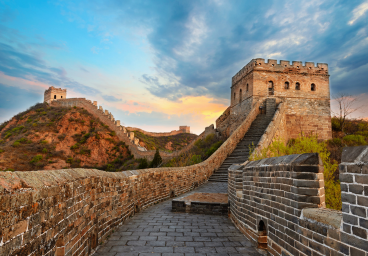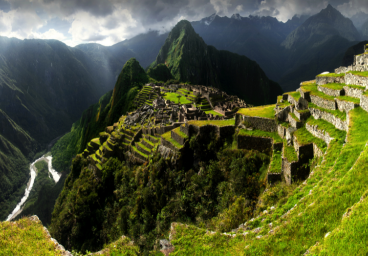Spanning thousands of miles across the undulating landscapes of northern China, the Great Wall stands as an awe-inspiring testament to human determination and the quest for security. This monumental structure, winding its way through rugged mountains and vast plains, has not only served as a formidable defensive barrier but also stands as an enduring symbol of China’s rich history and architectural prowess.
Historical Significance
Built over centuries by various dynasties, the Great Wall of China is not a single continuous wall but a series of fortifications and walls constructed by different rulers for the common purpose of defense. The most well-known sections of the wall were built during the Ming Dynasty (1368–1644 AD) to protect against invasions by nomadic tribes from the north.
Architectural Marvel
The Great Wall is a marvel of engineering, a testament to the ingenuity of ancient builders who utilized local materials to create a formidable defense system. Constructed using a variety of materials, including earth, wood, bricks, and stone, the wall features watchtowers, garrison stations, and beacon towers strategically positioned to provide optimal visibility and communication.
Visiting the Great Wall
Touring the Great Wall is a journey through history and geography. Visitors often explore the most accessible sections near Beijing, such as Badaling or Mutianyu, or venture to less crowded sections like Jinshanling and Simatai for a more immersive experience. Regardless of the chosen section, ascending the wall offers breathtaking vistas of the surrounding landscapes.
Defensive Strategies and Military Significance
The primary purpose of the Great Wall was defensive, providing protection against invasions and incursions. Watchtowers along the wall served as strategic vantage points, allowing defenders to spot potential threats and signal to neighboring sections. The sheer scale of the wall, combined with its formidable construction, made it a significant deterrent to potential invaders.
Cultural Symbolism
Beyond its military significance, the Great Wall has become a symbol of Chinese civilization, resilience, and enduring strength. Its cultural importance is reflected in the saying, “He who has not climbed the Great Wall is not a true man,” emphasizing the wall’s integral role in shaping the identity of the Chinese people.
Preservation Challenges and Conservation Efforts
Despite its robust construction, the Great Wall faces challenges such as erosion, vandalism, and unauthorized construction. Conservation efforts aim to protect and preserve this world heritage site. Strict regulations, maintenance projects, and educational initiatives contribute to the ongoing preservation of this iconic structure.
Great Wall Legends and Folklore
The Great Wall is steeped in legends and folklore, adding a layer of mystique to its already captivating presence. Stories of mythical creatures, valiant warriors, and the spirits of those who toiled to build the wall have been passed down through generations, enriching the cultural tapestry surrounding this colossal monument.
Tourist Experience and Hiking Adventures
For travelers, a visit to the Great Wall is not merely a historical excursion but an immersive adventure. Hiking along its ancient stones, witnessing the changing landscapes, and absorbing the historical echoes make for a once-in-a-lifetime experience. The wall’s various sections offer diverse hiking opportunities, from leisurely strolls to challenging treks.
Conclusion
The Great Wall of China stands as a remarkable testament to human resilience, collective effort, and the pursuit of security. Beyond its architectural grandeur, the wall embodies the spirit of a nation, resonating with stories of triumph, struggle, and cultural identity. As visitors traverse its ancient stones, they not only witness the engineering marvel of the wall but also connect with the enduring legacy of a civilization that shaped history from the ramparts of this monumental structure.



